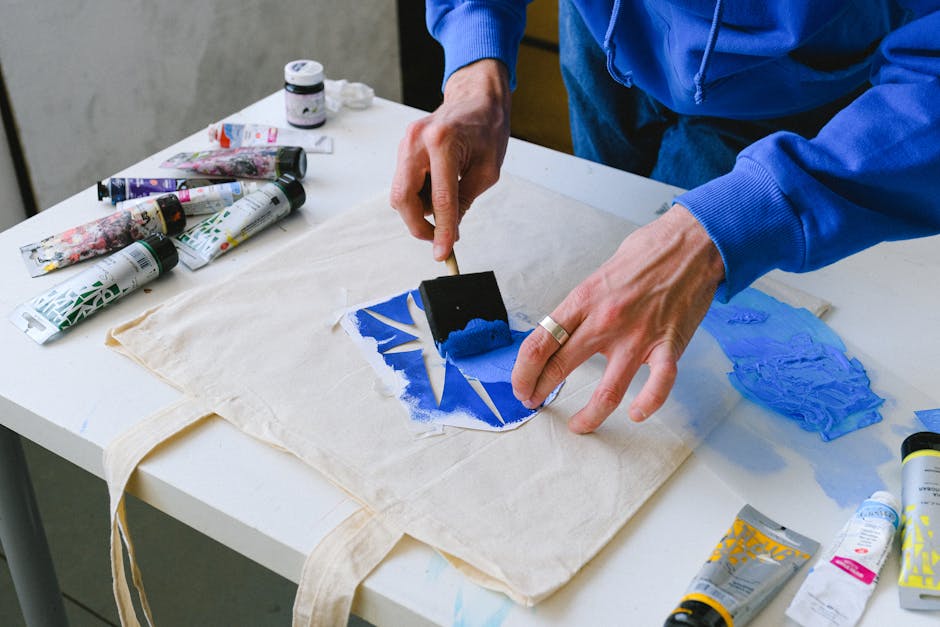Step 1 - Understanding Vegan Tote Bags
Vegan tote bags are environmentally friendly alternatives to traditional leather tote bags. These bags are made without the use of any animal products, appealing to those who embrace a cruelty-free lifestyle. They come in various designs, colors, and sizes to suit different preferences and needs.
One of the key aspects of vegan tote bags is the focus on sustainability. The materials used in making these bags are carefully chosen to have minimal impact on the environment. Understanding the eco-friendly nature of vegan tote bags is essential for those seeking ethical fashion choices.
When it comes to understanding how vegan tote bags are made, it’s important to consider the innovative approaches and materials used in their production. From recycled plastics to organic cotton, manufacturers employ a range of sustainable practices to create these stylish and functional accessories.
The beauty of vegan tote bags lies in the fusion of compassionate design and practicality. By incorporating recycled materials and biodegradable elements, these bags offer a versatile and chic option for individuals who value both fashion and sustainability.
Understanding the intricate details of vegan tote bag production reveals a commitment to ethical craftsmanship. Every stitch and material choice reflects a dedication to animal welfare and environmental consciousness, making each bag a statement of eco-conscious style.
Step 2 - Selecting Sustainable Materials
Selecting sustainable materials is a crucial step in the creation of vegan tote bags. From organic cotton to pineapple leather, manufacturers source materials that are both animal-free and environmentally friendly. These carefully chosen fabrics ensure that each bag meets the high standards of ethical fashion.
The process of selecting sustainable materials for vegan tote bags involves extensive research and testing. Manufacturers consider factors such as durability, texture, and eco-friendliness to create a product that is not only stylish but also aligned with eco-conscious values.
In the world of vegan fashion, the quest for innovative and sustainable materials never ceases. From mushroom leather to upcycled fabrics, designers are constantly exploring new avenues to push the boundaries of ethical fashion. This dedication to sustainability sets vegan tote bags apart in the world of accessories.
The beauty of sustainable materials lies in their ability to transform everyday items into eco-friendly treasures. By carefully selecting fabrics that minimize harm to animals and the planet, vegan tote bag creators infuse each product with a sense of purpose and responsibility.
The process of choosing sustainable materials for vegan tote bags is a thoughtful and intentional journey. Every fabric and component is selected with the planet and its inhabitants in mind, ensuring that each bag is a testament to the beauty of compassionate design.
Step 3 - Designing the Tote Bag
Designing a vegan tote bag involves a creative blend of style and functionality. Designers focus on creating versatile bags that are not only aesthetically pleasing but also practical for everyday use. The design process encompasses everything from silhouette to strap length, ensuring a well-rounded accessory.
In the realm of vegan fashion, designing a tote bag goes beyond mere aesthetics. Each element, from pocket placement to closure mechanisms, is carefully considered to enhance the user experience and offer maximum convenience. This meticulous attention to detail sets vegan tote bags apart in the fashion industry.
The art of designing a vegan tote bag lies in balancing form and function. Designers constantly innovate to create bags that are as stylish as they are sustainable. By blending creativity with eco-consciousness, they produce accessories that resonate with the modern, ethically-minded individual.
When crafting the design of a vegan tote bag, designers draw inspiration from nature, art, and emerging trends. This eclectic mix of influences results in bags that are not only visually striking but also culturally relevant. The design process reflects a harmonious fusion of creativity and ethical principles.
The design journey of a vegan tote bag is a testament to the power of conscious creation. Every line, texture, and color choice is imbued with meaning and intention, reflecting a deep respect for the planet and all its inhabitants. Each bag tells a story of mindfulness and artistry.
Step 4 - Crafting the Vegan Tote Bag
Crafting a vegan tote bag involves skilled artisans who bring the designers’ visions to life. From pattern cutting to stitching, each step in the crafting process requires precision and expertise. The result is a meticulously crafted bag that embodies the fusion of style, sustainability, and quality.
The craftsmanship behind vegan tote bags is a labor of love and dedication. Artisans carefully assemble each component, paying attention to every detail to ensure a flawless final product. This hands-on approach emphasizes the artistry and meticulousness of vegan accessory production.
In the realm of ethical fashion, crafting vegan tote bags is both a profession and a passion. Artisans pour their creativity and skill into every stitch, creating pieces that are not just accessories but symbols of conscientious living. The crafting process is a celebration of craftsmanship and ethical commitment.
Crafting vegan tote bags is a harmonious blend of tradition and innovation. Artisans draw on time-honored techniques while embracing modern sustainable practices to create bags that are as timeless as they are environmentally responsible. Each handcrafted piece tells a story of heritage and forward-thinking design.
The craft of making vegan tote bags is a reflection of the values and principles that guide ethical fashion. From the selection of materials to the final stitches, artisans imbue each bag with integrity and purpose. Crafting these accessories is not just a skill; it’s a commitment to a kinder, more sustainable future.




0 commenti